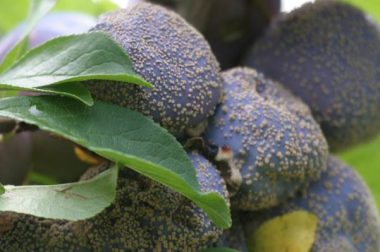
What is brown rot?
Brown rot is a destructive fungal disease of trees and shrubs in the genus Prunus, which includes peaches, plum, cherries, apricots and nectarines. Brown rot is particularly a problem on the fruits of susceptible plants, with the potential to cause losses of 50% or more prior to harvest. After harvest, additional losses due to the disease are possible if fruits are injured, bruised or stored at warm temperatures with moisture.
What does brown rot look like?
Initial symptoms of brown rot often occur in the spring as brown spots on blossoms. Affected blossoms eventually collapse completely, and can produce a gummy material that sticks to twigs leading to infections and subsequent twig dieback. Fruits that develop from healthy flowers can become infected as they mature leading to a brown fruit rot that quickly encompasses an entire fruit. Eventually, affected fruits will dry and shrivel to form “mummies”. Characteristic powdery, gray masses of spores form on the surfaces of both rotting fruits and mummies.
Where does brown rot come from?
Brown rot is caused by two fungi in the genus Monilinia (primarily M. fructicola and less commonly M. laxa). These fungi may be introduced into a garden via airborne spores produced on nearby wild or volunteer Prunus trees and shrubs. Insects such as sap beetles, vinegar flies and honeybees can also transport spores. These insects are attracted to brown rotted fruit and can subsequently visit and drop off spores on otherwise healthy fruit. Wounds due to insect feeding or hail can provide an entry point into fruits for brown rot fungi. Further spread can occur when infected and healthy fruits touch. Once introduced into a garden, brown rot fungi can overwinter on infected twigs and in mummified fruits that are hanging from trees or have fallen to the ground. Initial infections each spring are typically due to spores that are blown or splashed from twigs or from the gray masses on mummified fruits. More rarely, mummified fruits that are partially or shallowly buried in the ground will produce small (up to 1/16 inch diameter) mushroom-like structures called apothecia. Apothecia produce a second type of spore that can cause infections. Brown rot can occur under a wide range of temperatures (40 to 86°F), but tends to be more of a problem when the weather is warm (i.e., 68 to 77°F) and wet (i.e., with three or more hours of rain or dew formation).
How do I save a tree with brown rot?
Brown rot is not a lethal disease, but once fruits are infected, there are no curative treatments. To manage twig infections, prune four to six inches below sunken or dead tissue on each branch. Dispose of these branches by burning (where allowed by local ordinance) or burying them. To prevent spread of brown rot fungi on pruning tools, decontaminate tools between each cut by treating them for at least 30 seconds in a 10% bleach solution or preferably (due to its less corrosive properties) 70% alcohol. Rubbing alcohol and many spray disinfectants contain approximately 70% alcohol and are easy to use. If you use bleach, be sure to thoroughly rinse and oil tools after pruning to prevent rusting.


How do I avoid problems with brown rot in the future?
Remove and destroy any wild or volunteer Prunus trees and shrubs on your property, as well as all rotting and mummified Prunus fruits, as these can be reservoirs for brown rot fungi. Burn (where allowed by local ordinance) or deep bury these materials. Thin your Prunus trees to increase air flow and promote more rapid drying of twigs and fruits. For information on how and when to prune, see UW Bulletin A3629, Growing Apricots, Cherries, Peaches, and Plums in Wisconsin (available at https://learningstore.extension.wisc.edu/). Be sure to decontaminate cutting tools after tree/shrub removal and pruning as described above. Carefully handle fruits during harvest to minimize bruising, and store fruits in a cool, not overly wet environment.
If brown rot has been a chronic problem in your garden and the cultural methods discussed above have not proven successful for control, consider using fungicides. Select products that are labeled for use on apricots, cherries, peaches and/or plums and that contain captan, myclobutanil or propiconazole. To prevent blossom infections, make one application when approximately 10% of flowers are open. To prevent fruit infections, begin making applications three weeks before anticipated harvest, particularly if there is wet weather. When applying more than one application, DO NOT use myclobutanil and/or propiconazole for all treatments, as these active ingredients have similar modes of action; excessive use of these active ingredients can select for fungicide-resistant strains of brown rot fungi. Instead, alternate use of these active ingredients with use of captan or only use captan (which is not known to have problems with resistance development) for control. Also consider insecticide treatments to manage insects that can damage fruits and provide entry points for brown rot fungi. See UW Bulletin A4104, Midwest Fruit Pest Management Guide (available at https://learningstore.extension.wisc.edu/), for suggested insecticides and timings of applications. Be sure to read and follow all label instructions of any fungicides and insecticides that you select to ensure that you use these products in the safest and most effective manner possible. Be especially careful not to apply any pesticides closer to harvest than is allowed on the label.
For more information on brown rot:
Contact the University of Wisconsin Plant Disease Diagnostics Clinic (PDDC) at (608) 262-2863 or pddc@wisc.edu.
Authors: Ashley Ellinghuysen*, UW-Madison Plant Pathology
Last Revised: 02/28/2024
D-number: D0024
*Completed as partial fulfillment of the requirements for Plant Pathology 558 at the University of Wisconsin Madison.
References to pesticide products in this publication are for your convenience and are not an endorsement or criticism of one product over similar products. You are responsible for using pesticides according to the manufacturer’s current label directions. Follow directions exactly to protect the environment and people from pesticide exposure. Failure to do so violates the law.
Thanks to Nolan Bornowski , Rebecca Ellinghuysen , Patty McManus , Patti Nagai, Scott Reuss and Brittany Seidl for reviewing this document.
A complete inventory of UW Plant Disease Facts is available at the University of Wisconsin-Madison Plant Disease Diagnostics Clinic website: https://pddc.wisc.edu.
Send a Plant Sample for Analysis
Be cautious when self-diagnosing plant health issues. Very few diseases can accurately be diagnosed by eye.
Contact the UW Plant Disease Diagnostics Clinic (PDDC), and for a small fee, clinic staff can examine a plant, determine the cause of the disease/disorder, and provide advice on how to control or prevent the issue.
Download Article





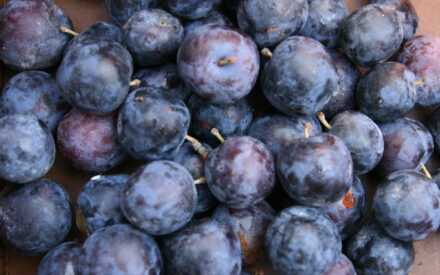 Growing Apricots, Cherries, Peaches, and Plums in Wisconsin
Growing Apricots, Cherries, Peaches, and Plums in Wisconsin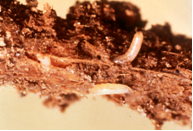 Degree Days for Common Fruit & Vegetable Insect Pests
Degree Days for Common Fruit & Vegetable Insect Pests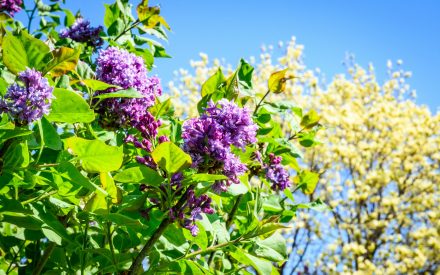 Phenology
Phenology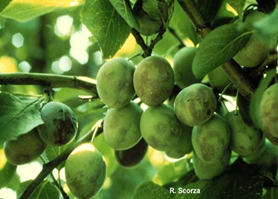 Plum Pox
Plum Pox


